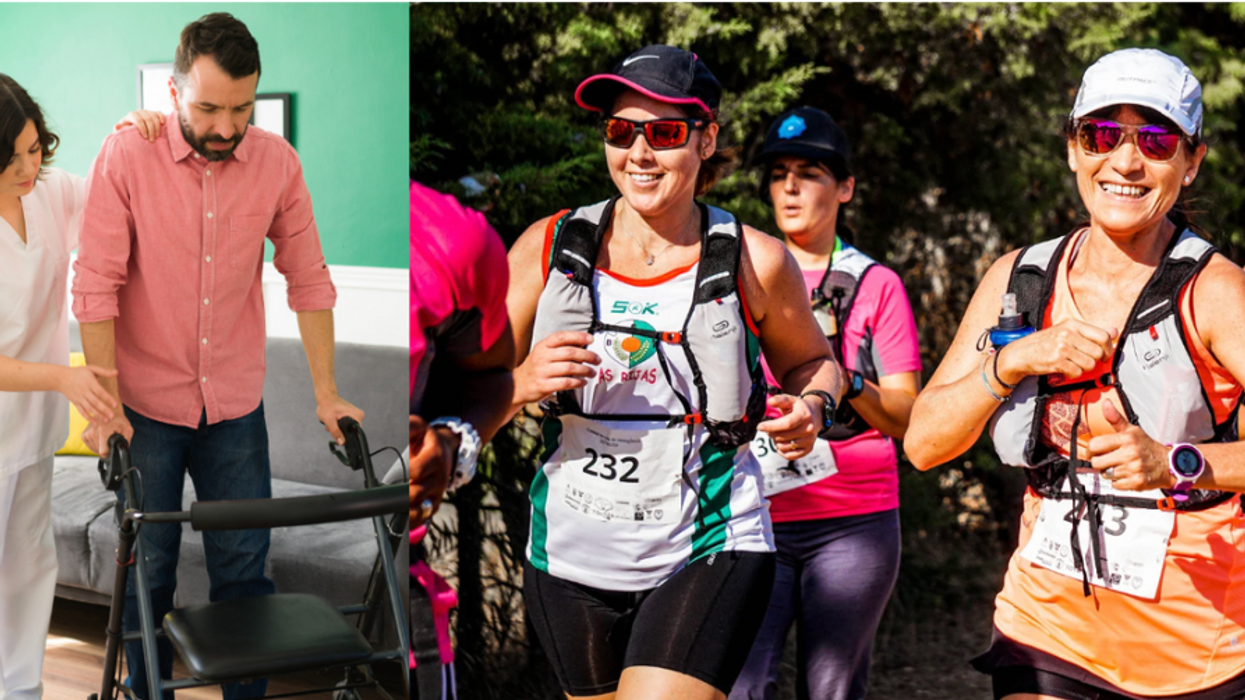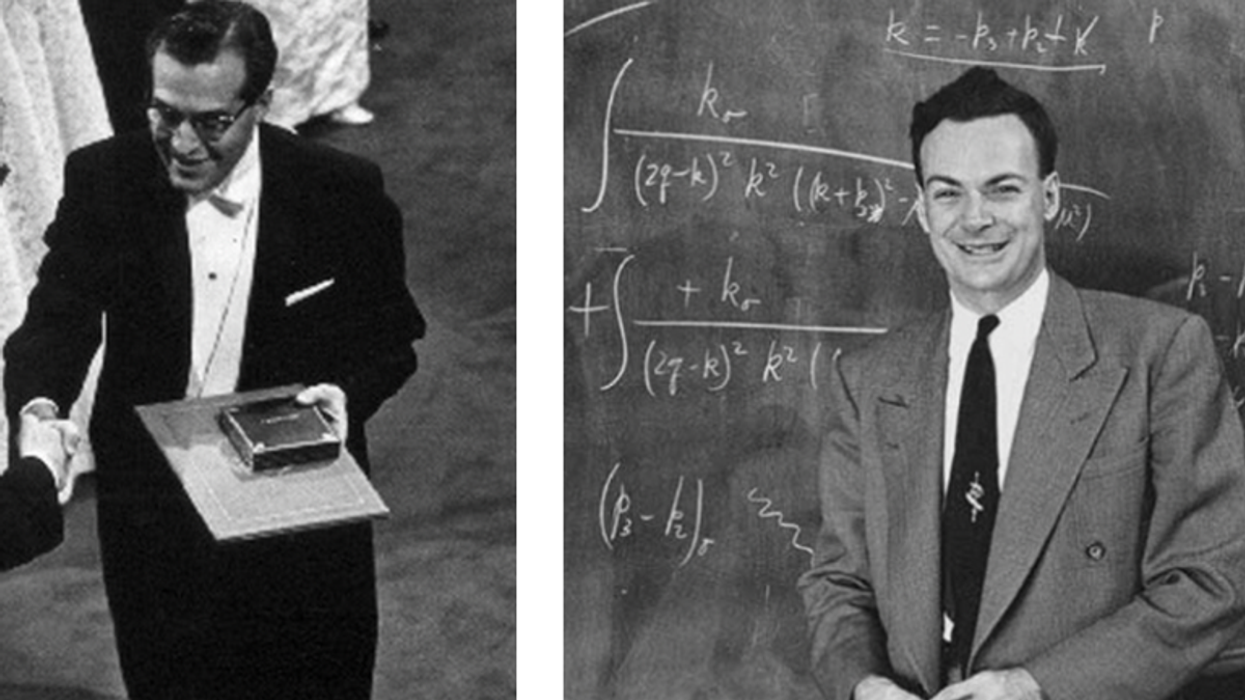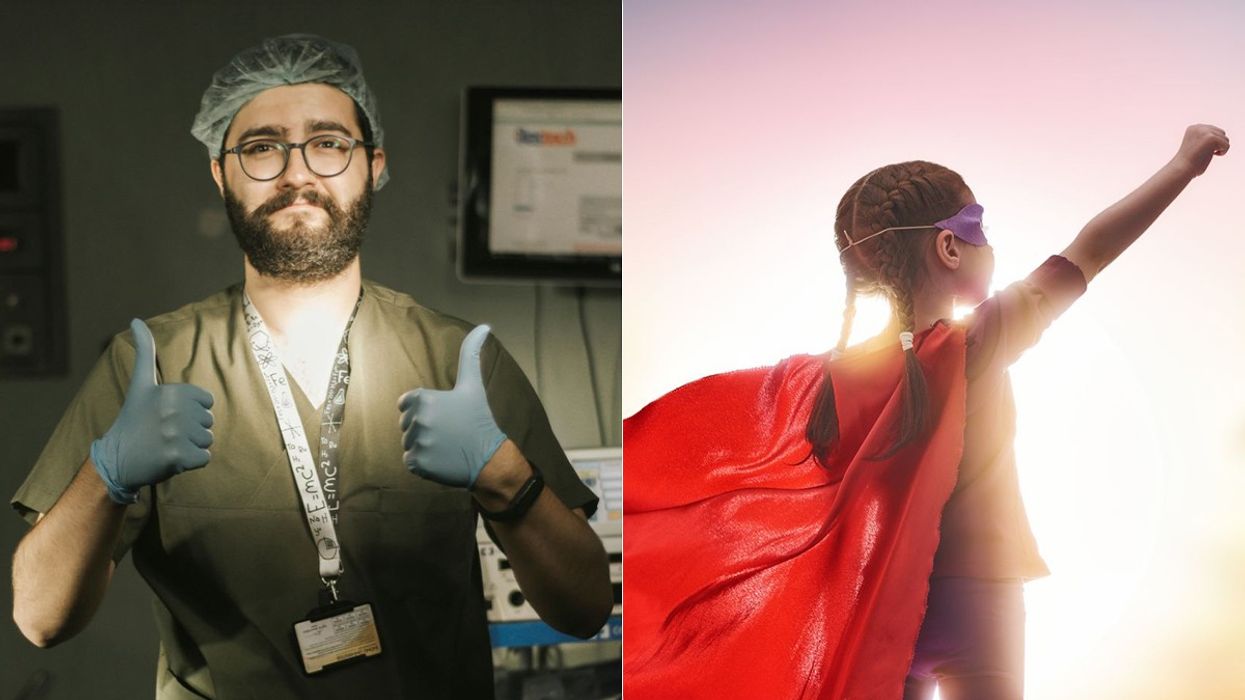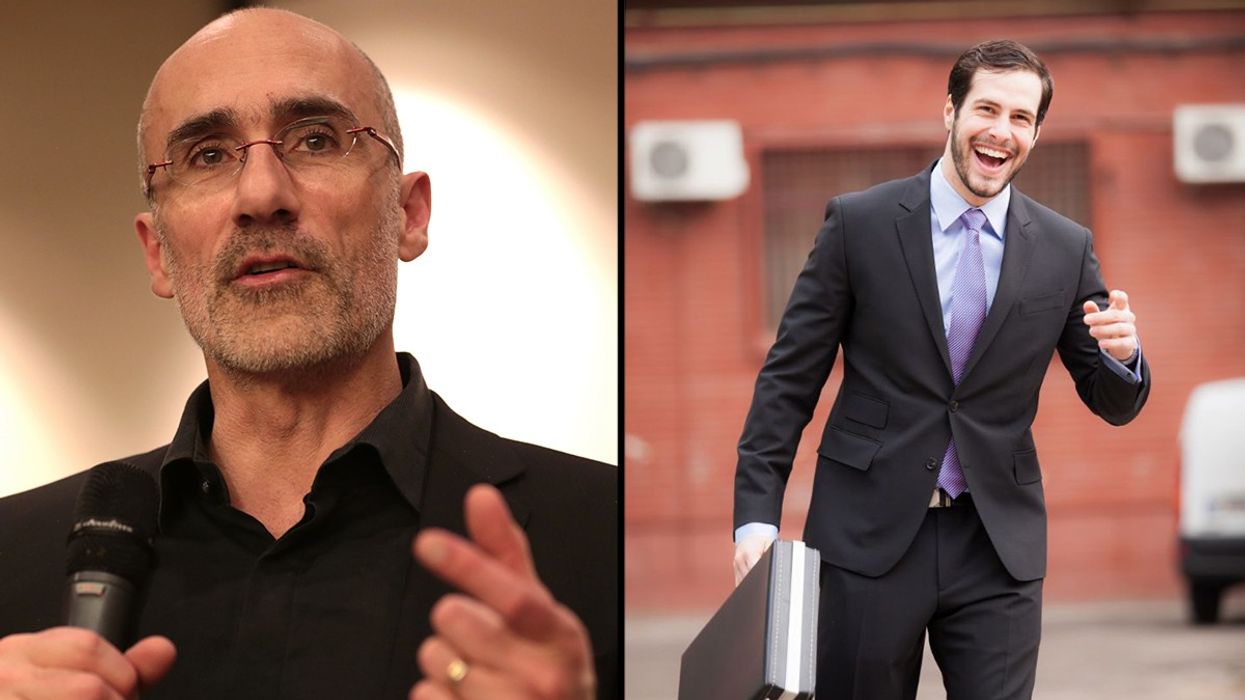In 2011, post office cashier Darren Awol suffered a gunshot wound into his spine in an unprovoked attack in Anerley, London, England. He was paralyzed from the waist down, and was told by his doctors that he would never walk again. However, after over a decade of hard work, drive, physical therapy, and support from his brother and physiotherapist, Awol competed in the London Marathon.
"Your limitations are as far as you allow them to be,” Awol said to BBC News. “It’s not about the medal but being able to do something I never thought I'd be able to."
While understandably fighting through depression and contemplating suicide, Awol decided to fight the odds. While limited in mobility and wheelchair-bound at the time, he would go to the gym to strengthen his body and his self-confidence. "Going to the gym is therapy for me: movement is a wonderful medicine,” proclaimed Awol.
It got to a point where he, now age 42, dropped over 141 pounds from his frame. He primarily uses elbow crutches and splints on each leg to walk around. While he doesn’t have feeling on the left side of his body, he can stand and keep mobile independently. While he had the support of his brother and physiologist, Awol credits his son, who was only a toddler at the time he was shot, with motivating him.
"It gave me the momentum to see me walking again,” he said.
For the London Marathon, Awol walked for the first and final legs of the marathon, but used his wheelchair for the rest of the race. Oddly enough, he said that he had to retrain himself on how to use a wheelchair since he has been walking independently for so long.
"It's been daunting because I haven't been in a wheelchair for 10 or 11 years so going back to learn how to use a wheelchair has been hard," said Awol.
Any money that Awol raised for the marathon will go towards building and opening a unit for people with spinal injuries, cerebral palsy, and multiple sclerosis to train and exercise. While one can admire Awol’s drive and determination to overcome his body’s limitations, his workouts were done to not just heal his body, but his mind as well.
"Exercise is like a natural mood booster,” says Dr. Carol Maher, PhD, of the University of South Australia. “When we exercise, our body releases endorphins, which are chemicals that make us feel happy and relaxed. It also helps reduce levels of stress hormones like cortisol. So, in a way, it's like a natural antidepressant and stress reliever all rolled into one.”
@jakegoodmanmd Let’s change the way we view exercise! Follow to learn ways we can improve our mental health and live our most balanced lives. #exercise #mentalhealth #longevity
Dr. Maher isn’t the only professional advocating exercise as a mental health treatment on top of a physical one. The health experts at Harvard University and the National Institute of Health also promote regular exercise as a means to reduce depression, anxiety, and stress. It doesn’t even have to be a rigorous workout, as something as simple as a daily walk or dancing to music can provide those mood boosting benefits while also alleviating physical pain such as headaches, back pain, and other bodily ailments caused by mental stressors. Exercise can also just keep your body from becoming less mobile as you age.
If you’re going through hard times and depression, exercise along with treatments recommended by your doctor and accredited psychiatrist can help. Overall, though, Awol is right: movement is a wonderful medicine, both for your body and your mind.



















 Good morning world!
Good morning world! A smiling team at work.
A smiling team at work. 

 Boy playing in superhero costume.Image via
Boy playing in superhero costume.Image via  Kids in the hero costumes.Image via
Kids in the hero costumes.Image via 
 Kids raise their hands and stretch.Image via
Kids raise their hands and stretch.Image via  Kids learn songs in the classroom.Image via
Kids learn songs in the classroom.Image via  This man has his mind blown on Adult Swim. media4.giphy.com
This man has his mind blown on Adult Swim. media4.giphy.com 
 Happy businesswoman and friends.Image via
Happy businesswoman and friends.Image via  Embrace change.Image via
Embrace change.Image via  Students in a group leap.Image via
Students in a group leap.Image via  Child taking a risk for play.Image via
Child taking a risk for play.Image via 
